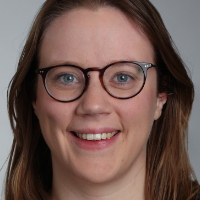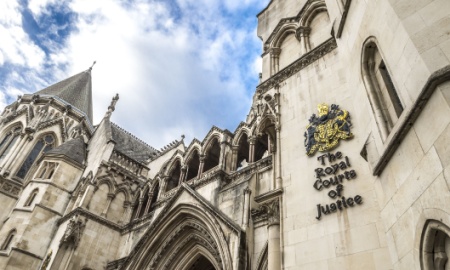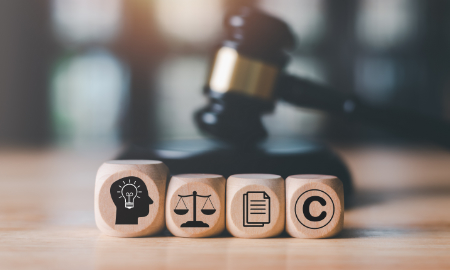Sign up for our free daily newsletter
YOUR PRIVACY - PLEASE READ CAREFULLY DATA PROTECTION STATEMENT
Below we explain how we will communicate with you. We set out how we use your data in our Privacy Policy.
Global City Media, and its associated brands will use the lawful basis of legitimate interests to use
the
contact details you have supplied to contact you regarding our publications, events, training,
reader
research, and other relevant information. We will always give you the option to opt out of our
marketing.
By clicking submit, you confirm that you understand and accept the Terms & Conditions and Privacy Policy
The decade-long dispute over patent rights to the CRISPR gene editing technology recently took an unexpected turn, as the group associated with Nobel Prize winners Emmanuelle Charpentier and Jennifer Doudna revoked two of its own foundational European patents. This latest twist in the CRISPR patent saga highlights issues that extend beyond the dispute over ownership of the technology.
Since the development of the CRISPR/Cas9 technology that earned Charpentier and Doudna their Nobel Prize, several organisations – including the group representing the Nobel winners (the University of California, University of Vienna and Charpentier, collectively CVC) – have been competing for control of its underlying patent rights. The first key CRISPR-related patent was granted to the Broad Institute of MIT and Harvard in the United States in 2014. However, CVC appeared to have evened the score when it was granted European patents relating to CRISPR/cas9 technology (EP2800811 and EP3401400), which were upheld at first instance in oppositions before the European Patent Office.
CVC’s success in Europe proved fleeting. The opposition decisions were appealed and, ahead of oral hearings that were scheduled for this month, the Board of Appeal released preliminary opinions considering both patents invalid on several grounds. In response, CVC’s lawyers filed requests to revoke the patents (thereby cancelling the proceedings), along with lengthy written submissions outlining its disagreements with the preliminary opinions.
Violation of right to be heard or tactical distraction?
In its submissions, CVC argued the revocations were necessitated by “serious procedural concerns” with the Board of Appeal’s approach in recent case law (namely T 2229/19) which, if followed, would violate its right to be heard. In CVC’s view, issues raised in preliminary opinions should be allowed to be addressed by filing new claim sets that delete the problematic claims from the patent – an approach it says was historically routinely allowed by the Board of Appeal. However, according to CVC, in T 2229/19 the Board of Appeal deviated from this practice by rejecting a claim set filed in similar circumstances on the basis that it would not prima facie overcome the Board of Appeal’s opinion on a different issue, without allowing the parties to make any arguments on that point. To CVC, there was a “non-negligible risk” the Board of Appeal would take this same approach and reject their claim requests without allowing CVC to properly make its case – a risk CVC was not willing to “expose the Nobel-prize winning invention” to, given it has other members of the same patent family (including pending and issued divisional patents) that it could try to rely on instead.
The opponents of the patents, on the other hand, have characterised CVC’s request for revocation as a tactical play to prevent an unfavourable final decision from being issued, and to mitigate knock-on effects for CVC’s other pending patents. The opponents dismissed CVC’s concerns about T 2229/19 as merely an attempt to distract from the deficiencies of the patents identified by the Board of Appeal. They have argued there would be nothing improper about the Board of Appeal rejecting CVC’s proposed claim sets, as it was CVC’s choice not to file them sooner – the issues they addressed were in play since the outset of proceedings, and CVC had already filed numerous claim sets in the two proceedings (223 and 47 auxiliary requests, respectively).
Setting aside CVC’s motives, the approach they outlined from T 2229/19 is a signal that patentees should carefully consider the timing of filing auxiliary claim requests at the European Patent Office, and may need to take a conservative approach, filing new claim sets to address alleged deficiencies at an early stage of proceedings.
The costs of revocation
The opponents are seeking costs from CVC for expenses they say were incurred as a result of the late revocation, including preparations for oral proceedings following the preliminary opinions, and unrecoverable accommodations and travel. The opponents argue the apportionment is justified because CVC waited more than two months after receiving the preliminary opinions before seeking revocation and only did so shortly before the oral hearings.
However, as CVC has pointed out in responding submissions, Board of Appeal case law provides that patentees are generally entitled to file requests for revocation at any time, and the benefits derived from such withdrawals are considered to offset the costs that they incur. It remains to be seen whether the Board of Appeal will find that the opponents’ arguments and the facts of this case justify departing from these principles.
While this latest instalment in the CRISPR patent saga is now coming to a close, it is still worth keeping an eye on. Not only for its downstream effects on ownership rights to CRISPR technology (including patent rights and the many licenses to technology based on them), but also as a signal that patentees should carefully consider their strategy for filing auxiliary claim sets before the Board of Appeal, and potentially providing clarity on when costs may be apportioned for revocation by patentees before oral hearings.
Emily Bottle is a patent litigation partner at Herbert Smith Freehills and Dylan Churchill is an associate in the firm’s intellectual property disputes team.
Email your news and story ideas to: [email protected]












